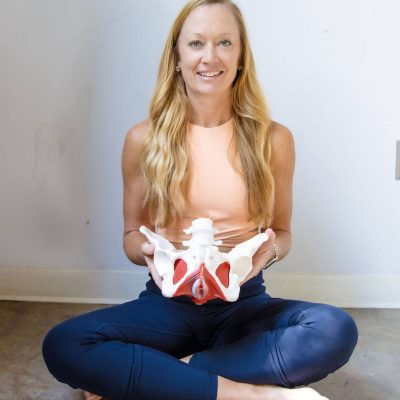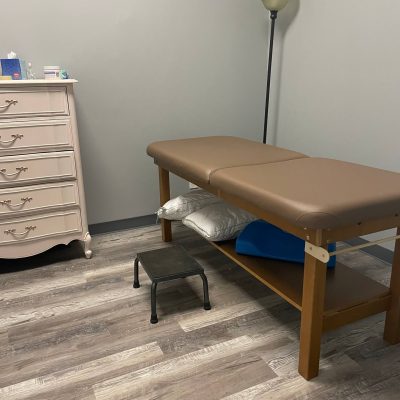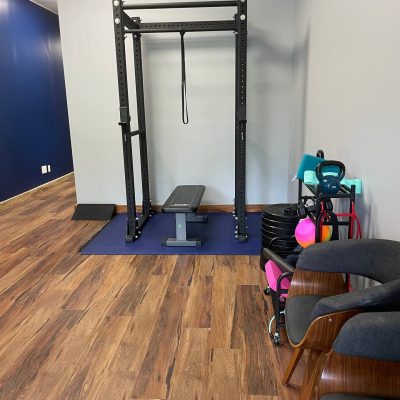By Dr. Erica Mitchell, PT, DPT
Hip pain is a common ailment that can significantly impact daily life, hindering mobility and causing discomfort. While there are various reasons for hip pain, muscle imbalances around the hip joint often play a crucial role in its development. Pelvic floor physical therapy is a holistic and effective approach to address not only pelvic issues but also to alleviate hip pain and correct muscle imbalances. These areas are so closely related that pelvic floor physical therapy could be the missing link to your relief!
Understanding Hip Pain and Muscle Imbalances
The hip joint is a complex structure involving bones, muscles, tendons, and ligaments working in harmony. Muscle imbalances around the hip occur when certain muscles become weak or tight, affecting the overall stability of the joint. Common causes of hip muscle imbalances include prolonged sitting, poor posture, improper exercise, or injury.
When muscle imbalances persist, they can lead to conditions such as hip bursitis, IT band syndrome, and hip labral tears. These issues often manifest as localized pain, limited range of motion, and discomfort during activities like walking, sitting, or standing.
The pelvic floor and the hip joint are intricately connected within the human anatomy, playing crucial roles in supporting and coordinating various bodily functions. The pelvic floor refers to a group of muscles and connective tissues that form a hammock-like structure at the base of the pelvis, providing support for the pelvic organs, including the bladder, uterus, and rectum. These muscles work in tandem with the hip joint, which is a ball-and-socket joint connecting the thigh bone (femur) to the pelvis. The pelvic floor muscles attach to the bony structures of the pelvis, and their function is closely intertwined with hip joint stability and movement. Properly functioning pelvic floor muscles contribute to the stability of the hip joint, aiding in activities such as walking, standing, and maintaining balance. Conversely, issues such as pelvic floor dysfunction can impact alignment and movement of the hip joint, highlighting the interconnected nature of these anatomical structures in promoting overall musculoskeletal health.
The Role of Pelvic Floor Physical Therapy
Pelvic floor physical therapy, traditionally associated with addressing pelvic floor dysfunction in both men and women, has gained recognition for its broader applications, including addressing hip pain and muscle imbalances. Here’s how pelvic floor physical therapy can contribute to hip health:
Pelvic floor physical therapists conduct a thorough assessment of the entire pelvic region, including the hips. They evaluate muscle strength, flexibility, and coordination to identify imbalances contributing to hip pain. This holistic approach ensures that the root cause of the issue is addressed rather than merely treating the symptoms.
Based on the assessment, therapists design personalized exercise programs to target specific muscle imbalances. Strengthening weak muscles and lengthening tight ones helps restore balance around the hip joint, promoting stability and reducing pain. These exercises may include exercises such as pelvic tilts, bridges, and targeted hip stretches.
Pelvic floor physical therapists employ manual therapy techniques to release tension and improve mobility in the hip muscles and surrounding structures. Soft tissue mobilization, joint mobilization, myofascial release, and dry needling are examples of hands-on techniques used to alleviate pain and restore proper function. This is an area where specific training in pelvic floor physical therapy comes into play; your pelvic floor physical therapist will have special training to internally address and mobilize hip muscle restrictions if needed!
Addressing hip pain also involves addressing contributing factors such as poor posture and improper body mechanics. Pelvic floor physical therapy educates individuals on maintaining proper alignment and body mechanics to prevent future muscle imbalances and reduce the risk of recurring hip pain.
Conclusion
Hip pain and muscle imbalances can significantly impact one’s quality of life, but the integration of pelvic floor physical therapy offers an avenue for relief. By addressing the root causes of hip issues and promoting overall pelvic health, individuals can regain mobility, reduce pain, and improve their overall well-being. If you’re struggling with hip pain or suspect muscle imbalances, consider consulting with a pelvic floor physical therapist to embark on a personalized journey toward optimal hip health.
Dr. Erica Mitchell, PT, DPT, is a Pelvic Floor Therapist treating women, men, and kids. She treats clients in the Magic City Physical Therapy office in Hoover, Alabama, and is also available for virtual consultation.







